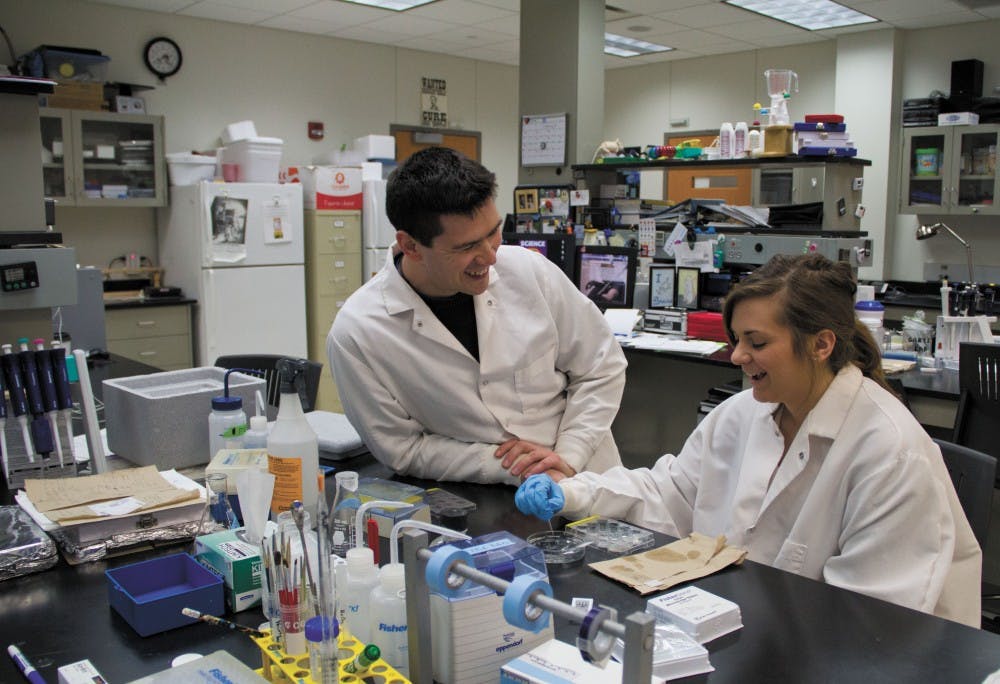Health screenings address allergies with animal research

Signing a lab safety form and listing your known allergies isn't enough anymore.
For students who wish to conduct research in labs, or take classes that involve animal research, a $50 health and safety form will soon be mandatory.
This safety form is already a mandate for professors, graduate students and student employees, but may become a requirement for undergraduates in the 2016 academic year. The process of developing more stringent safety screenings began in about six years ago.
"In 2009, we just had our federal assurance to use live animals renewed" said Ian Davison, the interim vice president of research and dean of the College of Science and Technology. "At that point, (the assurance) was contingent on developing an occupational safety program. Because of the health risk of animal testing, we revised the policy and required screenings of all employees (who are exposed to animals) and we are now working on applying that to students."
The greatest concern comes from dangerous skin and respiratory conditions that are caused from rodent dander, Davison said. Asthma is a major concern.
Gary Dunbar, director of the neuroscience program, expressed mixed feelings toward the new policy.
"$50 may not seem like a large investment to many, but for some, it could decide whether or not they take a desired course," he said.
Dunbar experienced mild allergic reactions while working as a graduate student at CMU, and taught himself to minimize exposure in order to stop symptoms.
"I've never personally seen our present policy as a problem," Dunbar said. "I've never seen a student get sick in the lab."
A questionnaire developed by local physician Douglas Schrauben of the Central Occupational Medicine Program is submitted to Occupational Health and Safety, and then given to Schrauben for evaluation. The student or faculty member is then informed through the university whether or not there were health risks detected in the questionnaire, although actual risks are kept confidential by Schrauben.
If Schrauben deems an individual to be at risk, an appointment will be made to address the severity of the condition.
"There is an increasing amount of undergraduates doing research, and the risks are still present for students, whether or not they're employed," Davison said.
OSHA states if a student requires a respirator or other additional protective equipment, that this is provided to the student without additional costs.
"Graduate students may stay for a couple years and then move on, but there are 70-100 grads who have filled it out working at any given time," said Jennifer Walton, manager for Environmental Health and Safety. This number is expected to drastically increase when the measure is introduced to undergraduates.
"Obviously if you are watching mice navigate a maze or indirectly observing you aren't in danger," Davison said. "The handling of animals is going to require a screening."



